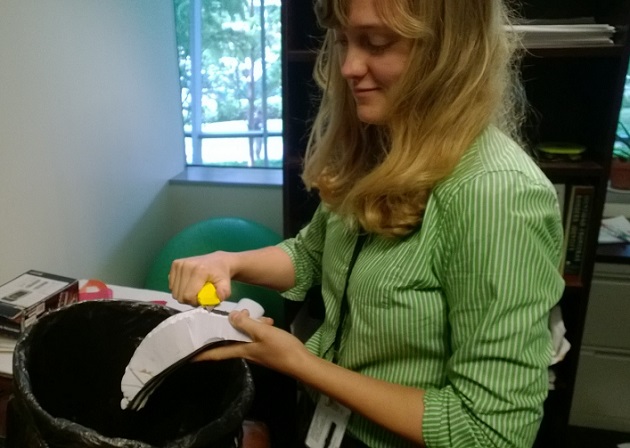Sole-Searching: The Dolphin in the Trash Can

Three and a half weeks after the Folklife Festival, there are still a few pieces to pick up. Participants settled back home in Kenya and China are starting to send in their feedback, and in the Center for Folklife and Cultural Heritage office, decorative khangas, Kenyan flags, and strings of plastic beads straggle over chairs, looking for a good home as the staff makes room for new projects and next year’s adventures.
I was working on another retrospective blog post when a coworker unexpectedly dumped a pile of what appeared to be rainbow rubber scraps on the desk. But it’s not just garbage-can treasure—it’s the few unfinished blocks of flip-flop carvings that the Kenyan artists from recycled art collective Ocean Sole were unable to take with them when they went home. There’s a partially finished fish, a rough-hewn lion (or maybe hippo), and a dolphin with no fins. There are also four pasted-together stacks of uncarved flip-flops that could be anything.
“You want an assignment?” says my supervisor with a grin.
Ten minutes later, I have a borrowed X-acto knife, a zebra-striped partial dolphin, and a slight feeling of trepidation.
It’s not exactly like whittling pine. The knife bites into the varying toughness of rubber in a different way, and I’m still puzzling over the steps it will take to reveal the rainbow beast within. But I have the two eight-foot-tall giraffes I saw standing on the Mall and now in our conference room for inspiration.
Artists Jonathan Lento and Francis Mutua Muvua have worked for Ocean Sole for seven and three years respectively, and Muvua was a woodcarver before he turned to recycling art. I don’t expect to turn out a perfectly proportioned elephant on my first try, but I’m grateful to experience art in a new way, in a form I would never have been aware of without the cultural exposure of the Festival. I may end up with a sculpture, and I may end up with a mess, but either way I will have tried something new and learned a humbling lesson about sustainability and art.
Meg Boeni is a media intern with the Center for Folklfe and Cultural Heritage, who studies journalism and Spanish at Boston University. Follow her for the next two weeks as she attempts to turn a block of other people’s shoes into wildlife.

